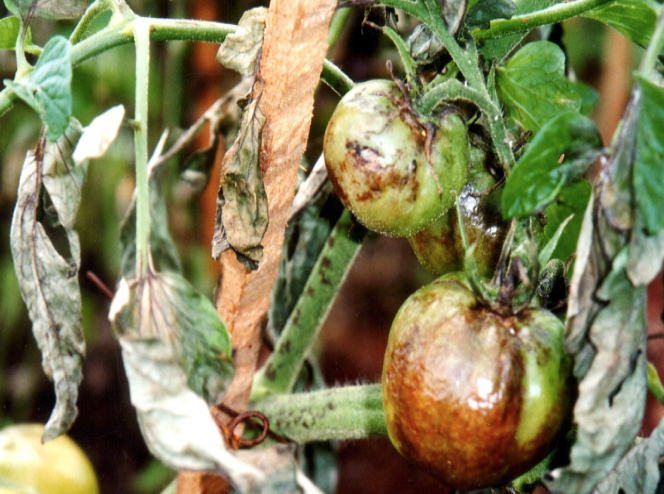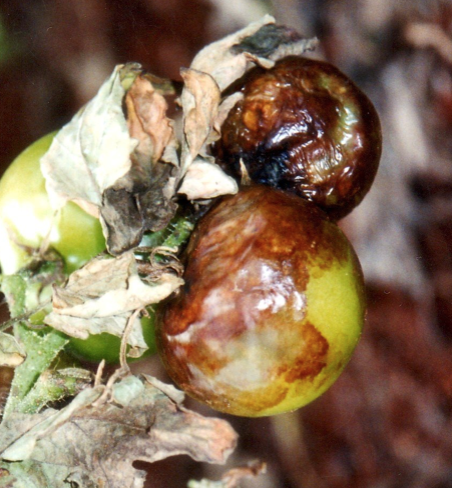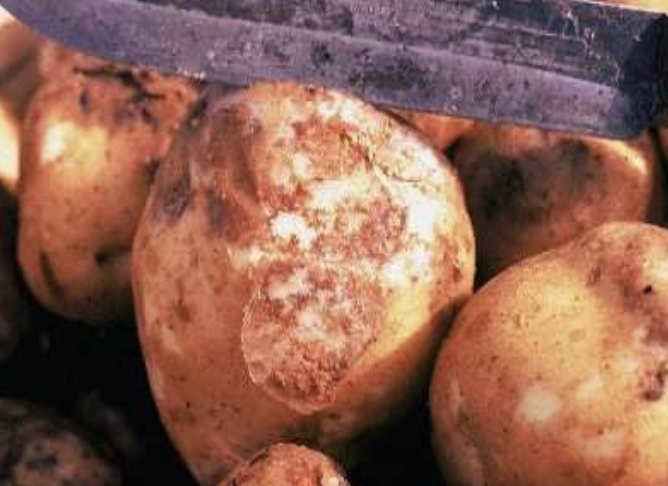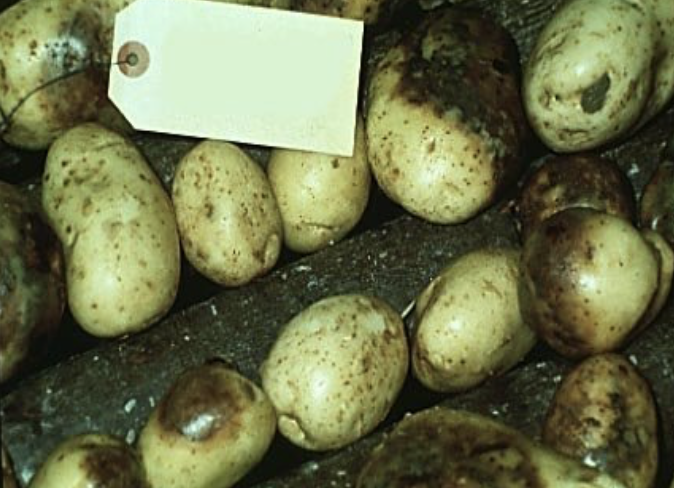Late blight (Phytophthora infestans)
Credit: Biovision-Infonet

(c) B. Loehr, icipe

(c) B. Loehr, icipe
Symptoms of late blight are irregular, greenish-black, water soaked patches, which appear on the leaves. The spots soon turn brown and many of the affected leaves wither, yet frequently remain attached to the stem. Infection of the fruit occurs at any stage of growth. It is most common on the upper half of the fruit. The spots are greasy brown and have a firm corrugated (rough) surface that occasionally shows narrow zonate markings.
| What to do: Use resistant varieties (e.g. “Rio Grande”, “Tengeru 97” etc). Use disease-free transplants. Stake and prune indeterminate varieties. Do not plant tomatoes after potatoes. |
On Potatoes

(c) William E. Fry. Reproduced from the Crop Protection Compendium, 2004 Edition. (c) CAB International, Wallingford.

(c) William E. Fry. Reproduced from the Crop Protection Compendium, 2004 Edition. (c) CAB International, Wallingford.
This disease is favoured by cool, cloudy, wet conditions. Symptoms of late blight are irregular, greenish-black, water soaked patches, which appear on the leaves. The spots soon turn brown and many of the affected leaves wither, yet frequently remain attached to the stem.
What to do:
- Plant resistant varieties where available. In Kenya, varieties “Tigoni”, “Kenya Baraka”, “Roslin Eburu”, “Annet” and “Asante” are claimed to have some resistance to late blight.
- Practise rotation with non-solanaceaous crops (do not rotate with tomatoes and eggplants).
- Practise good field hygiene. Pull up and discard infected plants.
- Select only, certified, disease-free seed potatoes and never plant table-stock potatoes
- Keep foliage dry and avoid overhead irrigation.
- Plant potatoes in sunny, well-drained locations.
- KARI has also conducted studies to evaluate lower cost measures used by farmers to control late blight, including the application of a mixture made of stinging nettle (possibly Urtica massaica, though not indicated) and Omo (presumably the commercial brand of laundry detergent). Although this treatment was not as effective as a commercial fungicide Ridomil, blight scores were nevertheless lower and yields higher than observed for the control. On a benefit to cost basis, the stinging nettle treatment was impressive, at over two to one (KARI 2000). This treatment is apparently not a common practice in Kenya, at least not yet, but an example of using stinging nettle (Urticaria dioica) as a treatment against late blight in Sweden is reported in Ecology and Society.